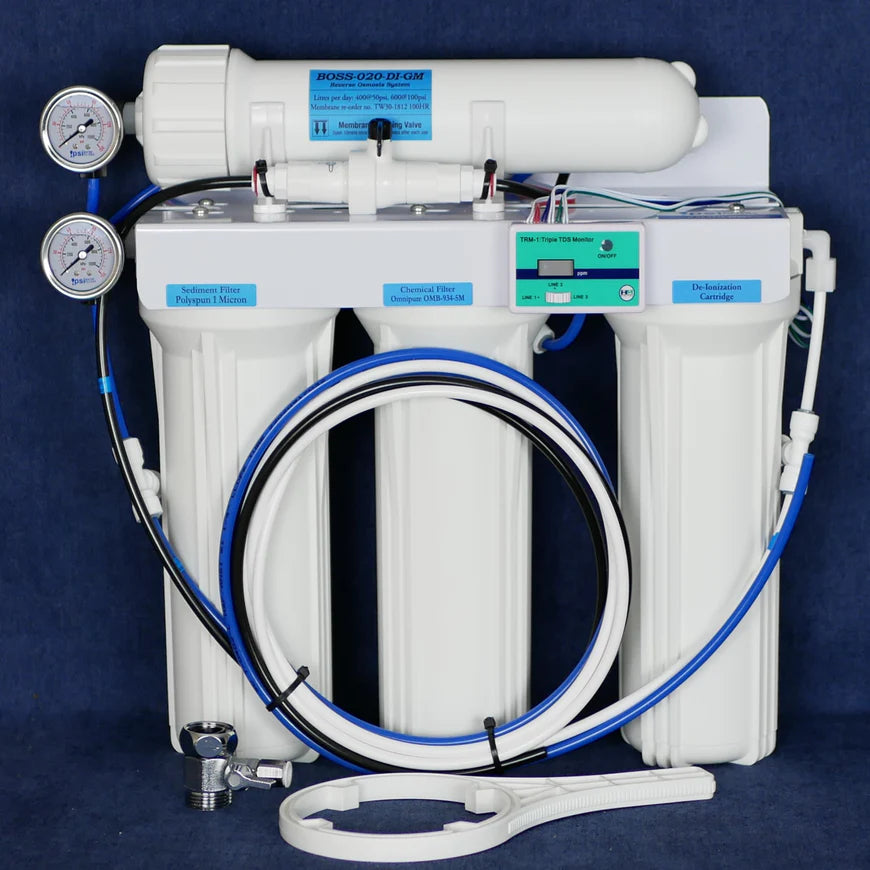The problem with float valves (without the use of a pressurised storage tank) is if you were filling a 100 litre drum about 125 litres of waste water is created with one of our systems but in the U.S. that figure will be about 400 litres. This is because our water is softer and we lower the waste ratio. With an RO with auto shut off without a reverse osmosis pressure tank what happens is the drum will fill to say the last 20mm fine but as the float valve starts to choke off the product water the waste is at 100%. At the last 1mm the float valve is allowing drips but because the drips won’t allow the absolute back pressure to the auto shutoff it stays open with say 300ml of waste and 30ml of product and this gets worse when just drips are supplied to the drum. The waste created to fill the last 20mm would be something like 2 to 3 times the amount to fill up to the last 20mm. When a storage tank is added the excess water being made backs up into the storage tank and when the back pressure from the storage tank equals 66% of the in-feed pressure the auto shut off valve closes and the dribbles and drips to the float valve are supplied by the storage tank.
If one of the final Di cartridge housings contained plastic pillows filled with air rather than resin cartridge that would work because the water pressure would compress the air in the pillows which will create the expansion required to shut the auto shut off valve. This is not as good as a reverse osmosis storage tank but would work.

